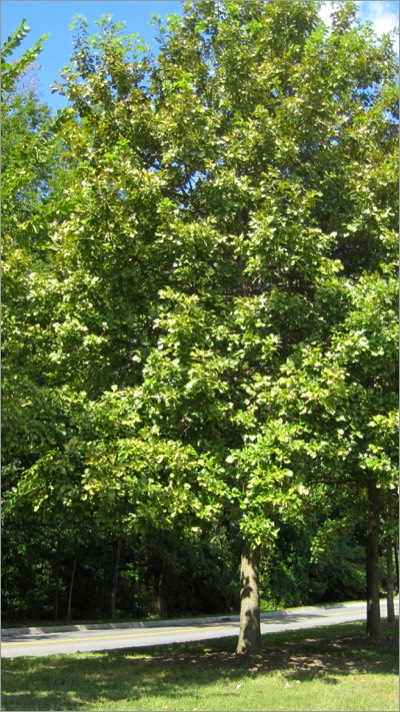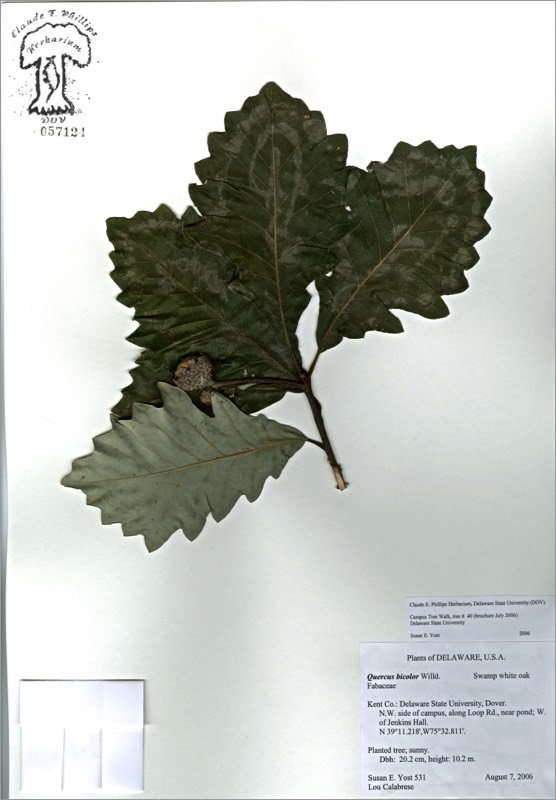Swamp white oak

Quercus bicolor
SWAMP WHITE OAK
Fagaceae
N.E. North America
Location: map coordinates K-4 (on Loop Road, west of retention pond), N 39°11'12'' W 75°32'48''
Planting history: probably planted with new Loop Road ca 2000. Source probably (Terrain at) Styers (nursery), PA.
Description:
Native species, State Rank: S4 (common, but not very common) on the coastal plain; S1 (extremely rare, and of conservation concern) on the piedmont, in Delaware
SWAMP WHITE OAK
Fagaceae
N.E. North America
Location: map coordinates K-4 (on Loop Road, west of retention pond), N 39°11'12'' W 75°32'48''
Planting history: probably planted with new Loop Road ca 2000. Source probably (Terrain at) Styers (nursery), PA.
Description:
- medium-sized to large deciduous tree
- etymology: Quercus = the Latin name; bicolor = 2-colored (the leaf)
- leaves simple, alternate; with 6-10 pairs of coarse round teeth; broadest above middle, and tapering to the tip; often whitened beneath
- monoecious (separate male and female flowers on same tree); flowers tiny; male flowers in drooping catkins, female flowers inconspicuous
- fruit is an acorn (develops from ovary of female flower); on a long stem
- in the “white oak group”: leaf lobes rounded (although sometimes sharp in this species); acorn matures in 1 year, often relatively sweet and edible
- end buds clustered (typical of oaks)
- habitat swamps, floodplains; hence common name (also sometimes called swamp oak)
Native species, State Rank: S4 (common, but not very common) on the coastal plain; S1 (extremely rare, and of conservation concern) on the piedmont, in Delaware


HIT REFRESH TO START LOCATION GRAPHIC